Murine hematopoietic stem cell activity is derived from pre-circulation embryos but not yolk sacs
- PMID: 30573729
- PMCID: PMC6302089
- DOI: 10.1038/s41467-018-07769-8
Murine hematopoietic stem cell activity is derived from pre-circulation embryos but not yolk sacs
Abstract
The embryonic site of definitive hematopoietic stem cell (dHSC) origination has been debated for decades. Although an intra-embryonic origin is well supported, the yolk sac (YS) contribution to adult hematopoiesis remains controversial. The same developmental origin makes it difficult to identify specific markers that discern between an intraembryonic versus YS-origin using a lineage trace approach. Additionally, the highly migratory nature of blood cells and the inability of pre-circulatory embryonic cells (i.e., 5-7 somite pairs (sp)) to robustly engraft in transplantation, even after culture, has precluded scientists from properly answering these questions. Here we report robust, multi-lineage and serially transplantable dHSC activity from cultured 2-7sp murine embryonic explants (Em-Ex). dHSC are undetectable in 2-7sp YS explants. Additionally, the engraftment from Em-Ex is confined to an emerging CD31+CD45+c-Kit+CD41- population. In sum, our work supports a model in which the embryo, not the YS, is the major source of lifelong definitive hematopoiesis.
Conflict of interest statement
The authors declare no competing interests.
Figures
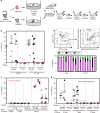

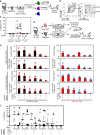
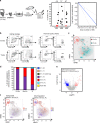
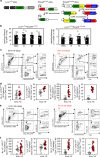
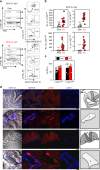
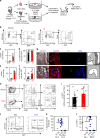
Similar articles
-
Identification of a yolk sac cell population with hematopoietic activity in view of CD45/c-Kit expression.Dev Growth Differ. 2011 Sep;53(7):870-7. doi: 10.1111/j.1440-169X.2011.01293.x. Epub 2011 Aug 28. Dev Growth Differ. 2011. PMID: 21883169
-
Intraembryonic, but not yolk sac hematopoietic precursors, isolated before circulation, provide long-term multilineage reconstitution.Immunity. 2001 Sep;15(3):477-85. doi: 10.1016/s1074-7613(01)00190-x. Immunity. 2001. PMID: 11567637
-
Generation of definitive hematopoietic stem cells from murine early yolk sac and paraaortic splanchnopleures by aorta-gonad-mesonephros region-derived stromal cells.Blood. 2001 Jul 1;98(1):6-12. doi: 10.1182/blood.v98.1.6. Blood. 2001. PMID: 11418454
-
Hematopoietic stem cells in the mouse embryonic yolk sac.Stem Cells. 1996 May;14(3):269-80. doi: 10.1002/stem.140269. Stem Cells. 1996. PMID: 8724693 Review.
-
Reconstitution of hematopoiesis following transplantation into neonatal mice.Methods Mol Med. 2005;105:95-106. doi: 10.1385/1-59259-826-9:095. Methods Mol Med. 2005. PMID: 15492390 Review.
Cited by
-
Clones assemble! The clonal complexity of blood during ontogeny and disease.Exp Hematol. 2020 Mar;83:35-47. doi: 10.1016/j.exphem.2020.01.009. Epub 2020 Jan 30. Exp Hematol. 2020. PMID: 32006606 Free PMC article. Review.
-
Adult-repopulating lymphoid potential of yolk sac blood vessels is not confined to arterial endothelial cells.Sci China Life Sci. 2021 Dec;64(12):2073-2087. doi: 10.1007/s11427-021-1935-2. Epub 2021 Jun 23. Sci China Life Sci. 2021. PMID: 34181164
-
The onset of circulation triggers a metabolic switch required for endothelial to hematopoietic transition.Cell Rep. 2021 Dec 14;37(11):110103. doi: 10.1016/j.celrep.2021.110103. Cell Rep. 2021. PMID: 34910918 Free PMC article.
-
One Size Does Not Fit All: Heterogeneity in Developmental Hematopoiesis.Cells. 2022 Mar 21;11(6):1061. doi: 10.3390/cells11061061. Cells. 2022. PMID: 35326511 Free PMC article. Review.
-
Hematopoietic Stem Cells and the Immune System in Development and Aging.Int J Mol Sci. 2023 Mar 20;24(6):5862. doi: 10.3390/ijms24065862. Int J Mol Sci. 2023. PMID: 36982935 Free PMC article. Review.
References
Publication types
MeSH terms
Grants and funding
LinkOut - more resources
Full Text Sources
Other Literature Sources
Medical
Molecular Biology Databases
Research Materials
Miscellaneous

